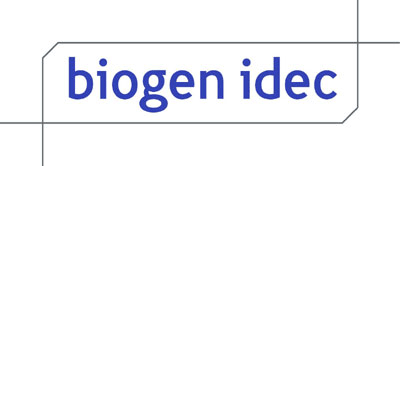Detailed results from Biogen Idec and Abbvie’s pivotal phase 3 decide study further define the efficacy and safety profile of Zinbryta™
Posted: 18 September 2014 | | No comments yet
Biogen Idec and AbbVie announced the full results from the Phase 3 DECIDE clinical trial, which show ZINBRYTA™ (daclizumab high-yield process), dosed subcutaneously once a month, demonstrated a statistically significant improvement in reducing disease activity…


Today Biogen Idec (NASDAQ: BIIB) and AbbVie (NYSE: ABBV) announced the full results from the Phase 3 DECIDE clinical trial, which show ZINBRYTA™ (daclizumab high-yield process), dosed subcutaneously once a month, demonstrated a statistically significant improvement in reducing disease activity in people with relapsing-remitting multiple sclerosis (RRMS) compared to AVONEX® (interferon beta-1a).1
These results are being presented at the Sixth Triennial Joint Meeting of the Americas Committee for Treatment and Research in Multiple Sclerosis and the European Committee for Treatment and Research in Multiple Sclerosis (ACTRIMS-ECTRIMS) in Boston.
“The full results from DECIDE demonstrate that ZINBRYTA significantly improved key measures of multiple sclerosis disease activity compared to AVONEX, including reducing annualized relapse rate and new brain lesion development,” said Ludwig Kappos, M.D., chair, Department of Neurology and head, MS-Research Group, University Hospital, Basel, Switzerland, and lead investigator for DECIDE. “These results help us better understand ZINBRYTA as a potential treatment option for people with relapsing-remitting MS.”
DECIDE Detailed Efficacy Results1
DECIDE was a two- to three-year, Phase 3, global, randomized, double-blind study that evaluated whether ZINBRYTA would provide superior outcomes for certain clinical endpoints compared to AVONEX. The study enrolled more than 1,800 patients with RRMS.
Primary Endpoint:1
- Patients on ZINBRYTA demonstrated a statistically significant 45 percent reduction in annualized relapse rate (ARR) compared to patients treated with AVONEX (p<0.0001).
Secondary Endpoints:1
- ZINBRYTA demonstrated superiority in reducing the number of new or newly enlarging T2-hyperintense lesions at week 96, with a 54 percent reduction relative to AVONEX (p<0.0001).
- The risk of three-month confirmed disability progression, as measured by the Expanded Disability Status Scale (EDSS), was reduced by 16 percent in patients treated with ZINBRYTA compared to those on AVONEX (p=0.16). This was not statistically significant.
- Seventy-three percent of ZINBRYTA patients were relapse-free compared to 59 percent of AVONEX patients (p<0.0001) at week 96.
- The risk of meaningful worsening in the physical impact of multiple sclerosis (MS) (> 7.5 point worsening in the Multiple Sclerosis Impact Scale [MSIS-29] physical score) was reduced by 24 percent in the ZINBRYTA group compared to the AVONEX group (p=0.018).
“For people living with multiple sclerosis, there continues to be a need for new medicines that work in different ways,” said Gilmore O’Neill, vice president, Multiple Sclerosis Research and Development, Biogen Idec. “If approved, ZINBRYTA would offer a novel mechanism to treating MS, in a self-administered, once-monthly dosing regimen.”
DECIDE Safety Results2
The safety profile of ZINBRYTA in the DECIDE study was generally consistent with the Phase 2 studies. The overall incidence of adverse events was comparable across the ZINBRYTA and AVONEX treatment groups.
In patients treated with ZINBRYTA compared to AVONEX, there was an increased incidence of serious infections (4 percent vs. 2 percent). The pattern and types of infections seen in the ZINBRYTA group were consistent with what has been previously observed in the MS population.
Also consistent with previous studies, patients in the ZINBRYTA group had a greater incidence of cutaneous adverse events (37 percent vs. 19 percent) and serious cutaneous reactions (2 percent vs. < 1 percent); and elevations of liver transaminases greater than five times the upper limit of normal (6 percent vs. 3 percent). There were four deaths in the AVONEX group and one death in the ZINBRYTA group, none of which was considered treatment related.
Based on the efficacy and safety data from the ZINBRYTA clinical development program, Biogen Idec and AbbVie plan to file marketing applications for ZINBRYTA with regulatory authorities during the first half of 2015.
“The results from DECIDE further support the potential of ZINBRYTA and we look forward to submitting the data for this investigational therapy to regulatory,” said Michael Severino, M.D., executive vice president, Research and Development and chief scientific officer, AbbVie.
ZINBRYTA data will be presented:
- Friday, Sept. 12 at 8:15 a.m. ET, Platform Presentation: Primary Results of DECIDE: A Randomized, Double-Blind, Double-Dummy, Active-Controlled Trial of Daclizumab HYP vs. Interferon β-1a in RRMS Patients (FC1.1)1
Additional ZINBRYTA data were presented:
- Thursday, Sept. 11 at 3:30 p.m. ET, Poster Presentation: Brain MRI Results of DECIDE: A Randomized, Double-Blind Trial of DAC HYP vs. IFNβ-1a in RRMS Patients (P051)3
- Thursday, Sept. 11 at 3:30 p.m. ET, Poster Presentation: Safety and Tolerability of Daclizumab HYP Treatment in Relapsing-Remitting Multiple Sclerosis: Results of the DECIDE Study (P094)2
References
- Kappos L, et al. Primary results of DECIDE: a randomized, double-blind, double-dummy, active-controlled trial of daclizumab HYP vs. interferon β-1a in RRMS patients. FC1.1 presented at ACTRIMS-ECTRIMS.
- Selmaj K, et al. Safety and tolerability of daclizumab HYP treatment in relapsing-remitting multiple sclerosis: Results of the DECIDE study. P094 poster presented at ACTRIMS-ECTRIMS.




